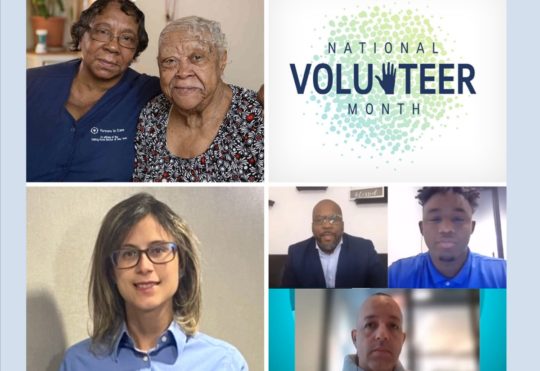When an Infection Can Kill: VNSNY Launches Sepsis Awareness Campaign
Every 20 seconds, someone in the U.S. is hospitalized for sepsis, a condition in which a patient’s infection spirals out of control, causing organ failure and even death. “Sepsis kills over a quarter-million Americans each year,” notes Joan Cassano, Vice President for Population Health and Care Management. “Yet these deaths are mostly preventable—because if sepsis is detected early, it can be cured with antibiotics.”

In recent months, VNSNY has rolled out a new screening protocol designed to help staff members quickly identify and treat potential sepsis cases. As part of this protocol, all VNSNY clinicians, care managers and home health aides are routinely checking their patients, clients and plan members for these six signs of potential sepsis:
- Clammy or sweaty skin
- Fever, shivering or feeling very cold
- Confusion
- Rapid heart rate
- Shortness of breath
- Extreme pain or discomfort
“If any of these signs are present,” adds Joan, “the next step is to connect the patient with medical care immediately so they can begin antibiotic treatment.”
How We Are Screening for Sepsis Across VNSNY
Those at highest risk for sepsis include individuals over 65, infants under one year old, people who are recovering from surgery or were recently hospitalized, and anyone with a chronic illness or weakened immune system. But sepsis can strike anyone, regardless of their age and health status—and when it does, a delay of even a few hours can be dangerous. For this reason, sepsis screening is now being done on a regular basis across VNSNY:
Nurses and rehabilitation therapists with VNSNY Home Care and Partners in Care are using a screening tool developed by the Home Care Association (HCA) of New York State to check patients for sepsis on every home visit. The tool, which has been added into the HomeCare HomeBase software platform, contains three questions: one asking if there’s a known infection, another checking for signs of systemic infection, and a third designed to spot impaired organ function. “Depending on the answers from the screening, patients may need go to their doctor’s office immediately or go to an urgent care center,” says Catherine Schaefer, Director of Quality Management Services for VNSNY Home Care. “If all three are a ‘yes,’ then it’s time to call 911 and have the patient transported to the emergency department.”
Care managers with VNSNY’s Population Health division and with VNSNY CHOICE Health Plans are also screening their patients and plan members for sepsis on every telephone consultation, using questions and follow-up protocols similar to the face-to-face tool developed by the HCA.
All Partners in Care home health aides have received basic training as well on how to spot signs of sepsis in clients. “This focused education prepares the HHA to be alert to the early signs of sepsis, and thereby immediately notify their supervisor or a registered nurse to initiate prompt intervention,” says Barbara Maccaro, Director of Quality Management and Education for Partners in Care. This HHA training is being continually reinforced by Partners in Care nurses, adds Barbara. In addition, 3,000 HHAs caring for high-risk patients have gone through a more specialized sepsis training program, and the rest of the Partners in Care HHA workforce will receive this specialized training in the coming months.
In addition, VNSNY’s Education Department has supported all sepsis training efforts across the organization, while the Marketing and Business Development Departments have been working together to increase the involvement of our physician partners in the community in VNSNY’s campaign to increase sepsis awareness. VNSNY Hospice and Palliative Care and Community Mental Health Services are also implementing department-specific workflows to help raise sepsis awareness across the organization.
The Sepsis Bottom Line: Staying Alert Prevents Hospitalizations—and Worse
“Our goal is to make sure everyone across VNSNY is aware of the danger that sepsis poses and how to spot its signs,” says Joan. “This is about protecting our patients’ and plan members’ health and keeping them safe at home. Besides being a potentially fatal condition, sepsis is one if the leading reasons that VNSNY patients and members are readmitted to the hospital. The bottom line is that if a patient has any type of infection at all, we want everyone to be on the alert.”

